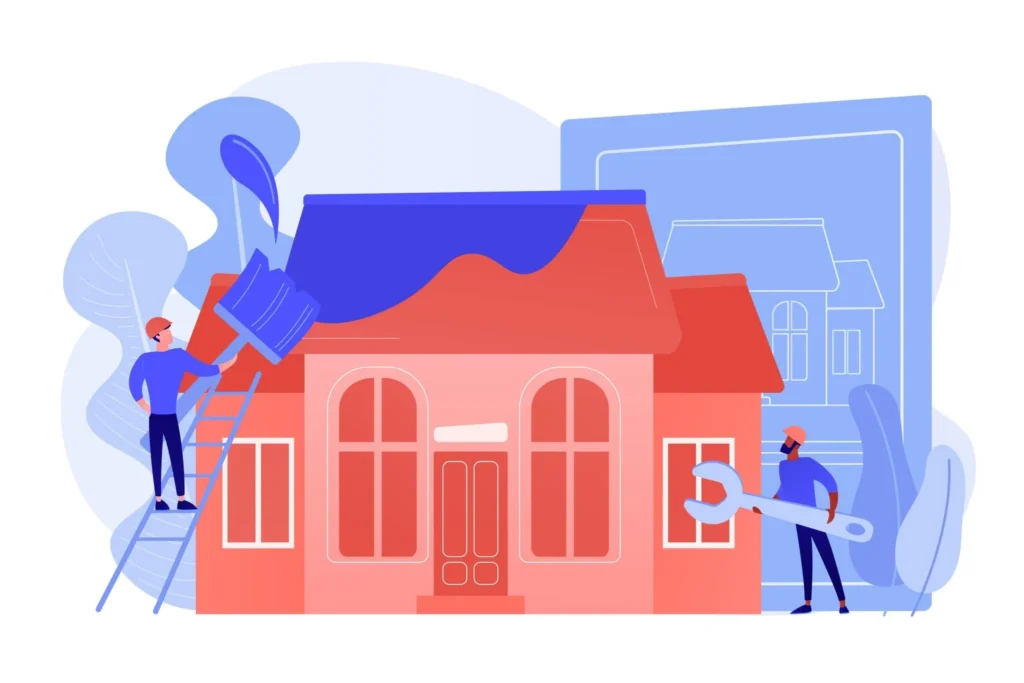Value Added Tax (VAT) is a pervasive financial factor in the world of property refurbishment, often posing a significant burden for businesses. Yet, there are situations where businesses can reclaim VAT on the refurbishment of residential properties.
In this article, we’ll explore the nuances of VAT reclamation for residential properties undergoing renovation, focusing on strategies to optimise VAT benefits.
The VAT Conundrum
In the UK, VAT is an essential part of the financial landscape. It’s a consumption tax levied on goods and services. When it comes to property refurbishment, VAT is a consideration that can have a substantial impact on the cost of projects.
However, not all VAT incurred during residential property refurbishment is recoverable. VAT recovery primarily depends on the nature of the future supply and the specific rules governing VAT exemption.

In most cases, VAT incurred on the refurbishment of residential property is not recoverable, due to the nature of the future supply – residential properties intended for letting or selling are typically exempt from VAT.
Understanding VAT Rates
VAT rates in the construction and property sector are diverse. While many property-related expenses may be subject to the standard rate of Value Added Tax (VAT), certain circumstances allow for reduced rates or exemptions.
For example,
5% Reduced Rate: The reduced rate of 5% can be applied to the renovation of empty homes provided they have not been inhabited for two years and meet other relevant conditions.
0% Zero Rate: The zero rate of VAT applies to the construction of new residential properties, subject to specific criteria. In such cases, VAT is recoverable.
VAT Exemption and Residential Property
VAT incurred on costs entirely attributable to a supply that falls under the exempt category is generally not recoverable. For residential properties, granting an Assured Shorthold Tenancy (AST) is considered an exempt supply.
This means that any VAT spent on repairs, maintenance, or upgrades for properties subject to a residential tenancy is non-recoverable. It’s crucial for property owners and investors to be aware of this when planning substantial expenses on tenanted residential properties
The Partial Exemption Lifeline
However, there is a lifeline for businesses that make both taxable and non-taxable supplies, aptly named ‘partially exempt businesses.’ Under the VAT partial exemption rules, businesses can potentially recover a portion of the input VAT.

There is a de minimis limit set for this purpose, which, if not surpassed, allows for the reclamation of exempt input tax. This limit is recalculated annually and is defined as being less than £7,500 of exempt input tax and less than 50% of the total input tax.
Optimising VAT Recovery Over Multiple Years
The partial exemption position is recalculated annually. This provides an opportunity for Residential Property improvement projects that span across two years to maximise VAT recovery by spreading the costs. This can significantly reduce the overall financial burden of VAT on a renovation project.
However, it’s important to note that the VAT should not be manipulated, and contractors must adhere to the appropriate VAT charges for works carried out.
VAT Benefits and the Cost of Construction
In an era where construction costs are on the rise, these cost increases are often transferred to customers through higher refurbishment quotes. The potential to reduce project costs by 20% through VAT savings can make refurbishment projects more economically viable.
Nevertheless, it’s essential to remember that, like any investment, VAT advantages should not be the sole factor in your decision-making process. Other aspects, such as the overall financial feasibility of the project, must also be considered.
Conclusion
Reclaiming VAT on the refurbishment of residential property is indeed a complex process, but with careful planning and adherence to the partial exemption rules, businesses can significantly reduce the financial burden associated with VAT.
By optimising VAT recovery across multiple years, they can make property renovation projects more economically viable and offer some relief in a landscape of rising construction costs.